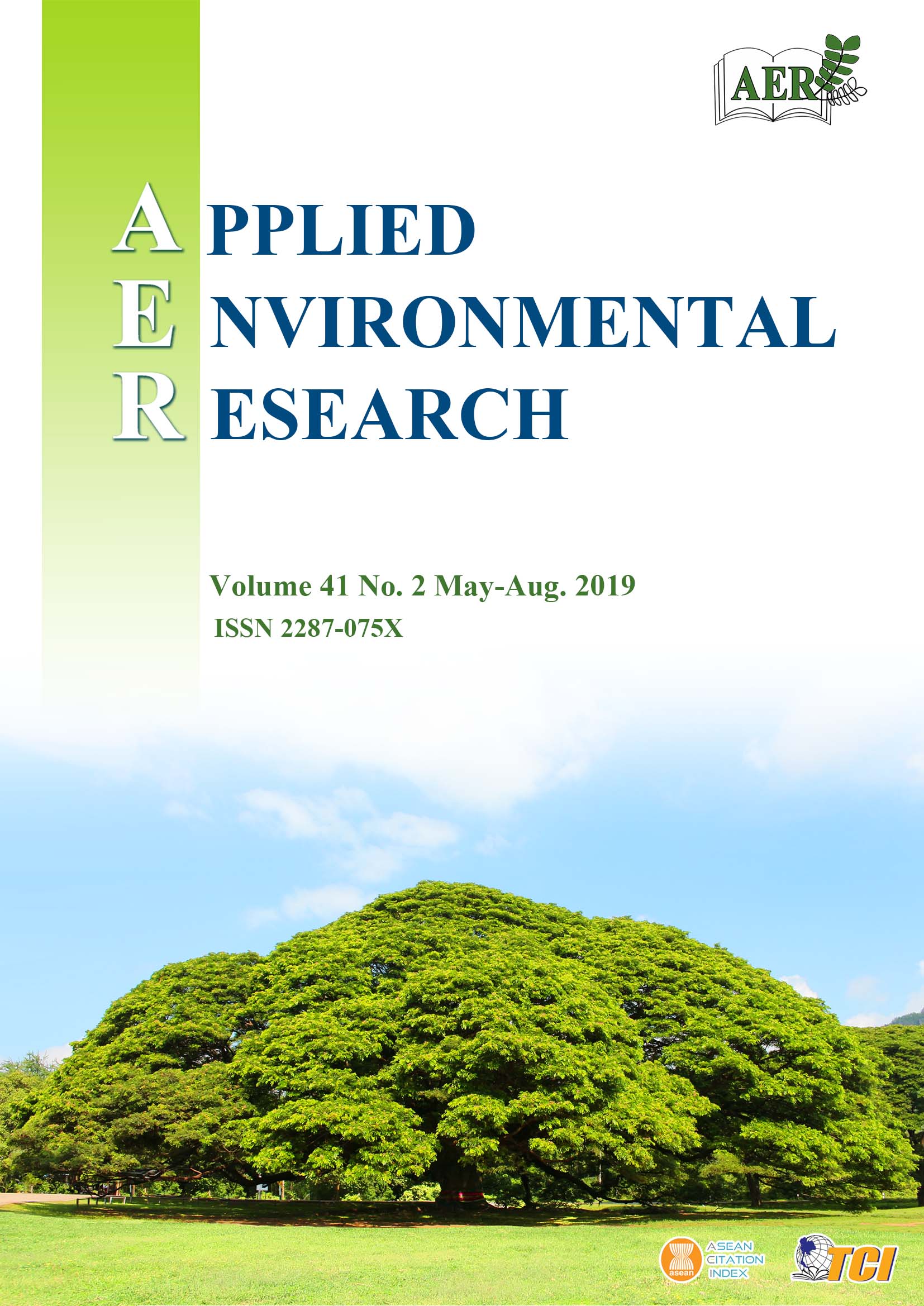Waste Composition Evaluation for Solid Waste Management Guideline in Highland Rural Tourist Area in Thailand
Main Article Content
Abstract
This study investigated municipal solid waste generation rate and its composition including the level of knowledge, attitude and practice on municipal solid waste (MSW) management of highland rural tourist area in Chiang Rai Province, Mae Salong Nok Sub-district, Thailand in order to propose the guidelines for effective MSW in rural tourist areas. Samples of MSW were collected during weekdays and several weekends, and separated into 4 categories: general, recyclable, organic and hazardous waste. About 40 % of the MSW consisted of organic waste; plastic bags were widely present, comprising more than 60 % of the mass of the general waste group. Level of knowledge, attitude and practice (KAP) on MSW was evaluated using questionnaires. While respondents scored 80 % and 76 %, respectively, on their level of knowledge of, and attitude to MSW, practice fell far short at only 37 %. The results led to a recommendation to strengthen waste separation at source, implement waste reduction and recycling concepts to reduce the volume of plastic bags, and introduce composting of food waste. The study also highlights economic and financial benefits of waste recycling. Additional value-added could be derived from the organic waste recycling program by promoting production of bioextracts and compost at household level, in order to reduce the amount of organic wastes and carbon emissions. The general and recyclable wastes could also be converted to energy as refuse-derived fuel 2 (RDF-2); the estimated average heating value of this RDF-2 was 23.56 MJ kg-1. To sustain MSW management in tourist areas, environmental education and environmental awareness campaigns are needed, using the appropriate local languages for communication, and introduction of a fairer system based on the polluter-pays principle for the business sector.
Article Details

This work is licensed under a Creative Commons Attribution-NonCommercial 4.0 International License.
Published articles are under the copyright of the Applied Environmental Research effective when the article is accepted for publication thus granting Applied Environmental Research all rights for the work so that both parties may be protected from the consequences of unauthorized use. Partially or totally publication of an article elsewhere is possible only after the consent from the editors.

